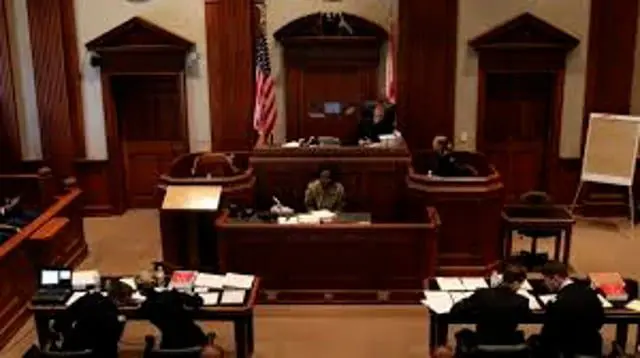En bail bond surrender process is a critical aspect of the criminal justice system that comes into play when agreements between defendants, bail bondsmen, and the court are violated. This process, while often misunderstood, serves as a crucial mechanism for maintaining the integrity of the bail system and ensuring that defendants comply with the terms of their release. When a bail bond agreement is broken, it triggers a series of events that can have significant consequences for all parties involved.
At its core, the bail bond surrender process begins when a bail bondsman or a co-signer decides to revoke their support for a defendant’s bail. This decision is typically made when there is a belief that the defendant may fail to appear in court or has violated other conditions of their release. The process of surrendering a bond is not taken lightly, as it can have immediate and lasting impacts on the defendant’s freedom and legal standing.
One of the primary reasons for initiating a bond surrender is the perceived risk of the defendant fleeing or failing to appear in court. Bail bondsmen, who are financially responsible for ensuring the defendant’s appearance, constantly assess the risk associated with each client. If they receive information suggesting that a defendant may be planning to skip bail, they may choose to surrender the bond to mitigate their potential losses.
Another common trigger for bond surrender is the violation of bail conditions. These conditions can vary widely depending on the nature of the charges and the judge’s discretion. They may include restrictions on travel, requirements to check in regularly with a bail agent, or prohibitions on contacting certain individuals. When a defendant fails to adhere to these conditions, it not only violates the terms of their release but also increases the risk for the bail bondsman.
El marco jurídico bail bond surrender varies from state to state, but there are some common elements. In most jurisdictions, the bail bondsman has the right to arrest the defendant for the purpose of surrendering them to the custody of law enforcement. This power is derived from the contractual agreement between the bondsman and the defendant, as well as state laws governing the bail industry.
When a bail bondsman decides to surrender a bond, they must follow specific legal procedures. This typically involves notifying the court and law enforcement of their intention to revoke the bond. The bondsman must then physically surrender the defendant to the appropriate authorities, usually the local sheriff’s department or the jail where the defendant was originally held.
The process of physically surrendering a defendant can be complex and potentially dangerous. Many bail bondsmen work with bounty hunters or fugitive recovery agents to locate and apprehend defendants who have violated their bail agreements. These professionals are trained in tracking and apprehension techniques and operate within a legal framework that allows them to pursue and arrest bail jumpers.
Once a defendant is surrendered, they are typically returned to jail to await further court proceedings. The court may then reassess the defendant’s bail status, potentially setting a higher bail amount or revoking bail altogether. This reassessment takes into account the reasons for the bond surrender and may consider the defendant’s overall compliance with court orders and the likelihood of future appearances.
For defendants, the consequences of a bond surrender can be severe. Beyond the immediate loss of freedom, a bond surrender can negatively impact their case. Judges may view the surrender as evidence of unreliability or flight risk, potentially influencing future bail decisions or even the outcome of the case itself. Additionally, defendants may face additional charges related to bail jumping or failure to appear, further complicating their legal situation.
Co-signers, often family members or friends who have guaranteed the defendant’s bail, also face significant consequences when a bond is surrendered. In many cases, co-signers are financially responsible for the full amount of the bail if the defendant fails to appear. The decision to surrender a bond can strain personal relationships and create lasting financial hardships for those who have put their trust and resources on the line.
The bail bond industry itself is significantly impacted by the surrender process. While surrendering a bond can protect a bail agency from financial loss in the short term, it can also affect their reputation and relationship with the courts. Bail bondsmen must balance their financial interests with their role in the justice system, often walking a fine line between protecting their business and maintaining the trust of the courts and their clients.
Recent years have seen increased scrutiny of the bail bond system, with many jurisdictions implementing reforma de la fianza measures aimed at reducing reliance on cash bail. These reforms have had a significant impact on the bail bond industry and, by extension, the bond surrender process. In some areas, the use of risk assessment tools and pretrial services has reduced the need for commercial bail bonds, leading to a decrease in bond surrenders.
However, in jurisdictions where commercial bail remains prevalent, the surrender process continues to play a crucial role in the pretrial justice system. Advocates argue that the ability to surrender bonds provides an important layer of accountability, ensuring that defendants comply with the terms of their release and appear for court dates. Critics, on the other hand, contend that the threat of surrender can be used coercively and may disproportionately affect low-income defendants and communities of color.
The technological advancements in recent years have also influenced the bail bond surrender process. Many bail agencies now use sophisticated software to track defendants and assess risk, allowing for more informed decisions about when to initiate a surrender. GPS monitoring and other electronic surveillance tools have provided alternatives to physical custody, in some cases reducing the need for bond surrenders while still ensuring compliance with bail conditions.
The legal landscape surrounding bail bond surrenders is continually evolving. Courts are increasingly examining the constitutionality of certain bail practices, including the surrender process. Some jurisdictions have implemented stricter regulations on when and how bonds can be surrendered, aiming to balance the rights of defendants with the need for an effective bail system.
One area of ongoing legal debate is the use of bounty hunters in the surrender process. While some states have strict regulations governing the activities of fugitive recovery agents, others have more lenient laws or no specific statutes addressing their role. This legal patchwork has led to calls for more uniform standards and oversight of the bounty hunting industry.
The financial implications of bond surrenders extend beyond the immediate parties involved. When a bond is surrendered and a defendant is returned to custody, it can place additional strain on already overcrowded jails and increase costs for local governments. This has led some jurisdictions to explore alternatives to traditional bail and surrender processes, such as expanded pretrial services and community-based supervision programs.
For bail bondsmen, the decision to surrender a bond is often a last resort. Many agencies have implemented more proactive measures to reduce the need for surrenders, such as increased communication with defendants, reminder systems for court dates, and partnerships with community organizations to provide support services. These efforts not only help reduce the frequency of surrenders but also contribute to better outcomes for defendants and the justice system as a whole.
The ethical considerations surrounding bond surrenders are complex and multifaceted. Bail bondsmen must balance their financial interests with their ethical obligations to clients, the courts, and the broader community. This can lead to difficult decisions, particularly in cases where a defendant may be struggling with addiction, mental health issues, or other challenges that contribute to bail violations.
As the criminal justice system continues to evolve, so too does the role of bail bonds and the surrender process. Some jurisdictions are exploring hybrid models that combine elements of commercial bail with increased pretrial services and supervision. These approaches aim to maintain the accountability provided by fianzas while addressing some of the criticisms of the traditional system.
El impacto de reforma de la fianza on the surrender process has been significant in many areas. In jurisdictions that have implemented comprehensive reform measures, such as New Jersey and California, the use of commercial bail has decreased dramatically. This has led to a corresponding reduction in bond surrenders, as more defendants are released on their own recognizance or through pretrial services programs.
However, the bail bond industry has adapted to these changes in various ways. Some agencies have expanded their services to include pretrial supervision and support, positioning themselves as partners in the reform process rather than opponents. Others have focused on high-risk cases where commercial bail is still permitted, developing specialized expertise in managing complex bail situations.
The COVID-19 pandemic has also had a profound impact on the bail system and the surrender process. Many jurisdictions implemented emergency measures to reduce jail populations, including expanded use of cite and release policies and increased reliance on pretrial services. These changes have altered the landscape for bail bondsmen and affected how and when bond surrenders occur.
Looking to the future, the bail bond surrender process is likely to continue evolving in response to changing legal, social, and technological factors. As more data becomes available on the effectiveness of various pretrial release methods, policymakers and courts will be better equipped to make informed decisions about the role of commercial bail and the surrender process in the justice system.
One potential area of development is the increased use of risk assessment tools in bail decisions and the surrender process. These tools, which use algorithms to evaluate a defendant’s likelihood of appearing in court or committing new offenses, could provide more objective criteria for determining when a bond should be surrendered. However, the use of such tools has also raised concerns about potential bias and the need for human oversight in bail decisions.
El papel de pretrial services agencies in the bail and surrender process is another area of ongoing development. In many jurisdictions, these agencies are taking on a larger role in supervising released defendants, potentially reducing the need for commercial bail bonds and, by extension, bond surrenders. However, the effectiveness of these programs and their impact on public safety and court appearance rates continue to be subjects of debate.
The legal community, including defense attorneys and prosecutors, plays a crucial role in shaping the bail bond surrender process. Defense attorneys often work closely with bail bondsmen to ensure their clients comply with bail conditions and avoid surrenders. Prosecutors, on the other hand, may request bond revocations or surrenders if they believe a defendant poses a risk to public safety or is likely to flee.
The judicial perspective on bond surrenders is also evolving. Many judges are becoming more cautious about approving surrenders, particularly in cases where the violation is minor or the defendant has made efforts to comply with bail conditions. Some courts have implemented review processes for bond surrenders, requiring bail bondsmen to provide detailed justifications for their actions.
The impact of bond surrenders on families and communities is an often-overlooked aspect of the process. When a defendant is surrendered and returned to custody, it can have ripple effects on their dependents, employers, and support networks. Recognizing these broader impacts, some jurisdictions are exploring more holistic approaches to pretrial release and supervision that take into account a defendant’s family and community ties.
The intersection of mental health and substance abuse issues with the bail system presents unique challenges for the surrender process. Defendants struggling with these issues may be more likely to violate bail conditions, but returning them to custody may exacerbate their problems and fail to address the underlying causes of their behavior. Some jurisdictions are exploring specialized bail programs for defendants with mental health or substance abuse issues, which may include alternative surrender processes that prioritize treatment and support over incarceration.
As the bail bond industry continues to adapt to changing legal and social landscapes, the surrender process is likely to remain a critical but contentious aspect of the pretrial justice system. Balancing the needs for public safety, defendant accountability, and fairness in the justice system will require ongoing dialogue and collaboration between all stakeholders in the bail process.
The future of the bail bond surrender process will likely be shaped by a combination of legislative action, judicial decisions, and industry innovation. As more states consider bail reform measures, the role of commercial bail and the surrender process may continue to evolve. However, the fundamental need to ensure defendant compliance and court appearances is likely to remain a constant, suggesting that some form of accountability mechanism, whether through bail bonds or alternative methods, will continue to play a crucial role in the criminal justice system.
Website citations:
- https://freeatlastbb.com/blog/what-does-bond-surrender-mean/
- https://mybailhotline.com/2023/08/what-happens-if-your-bond-is-revoked/
- https://balboabailbonds.com/blog/what-happens-when-a-bond-is-surrendered-the-key-facts-revealed/
- https://www.detroitbailbonds.com/what-is-a-bail-bond-surrender/
- https://neareport.com/2023/11/01/arkansas-bail-bond-laws-face-major-changes-in-2024-concerns-arise-over-jail-overcrowding/
- https://abbabailbonds.com/the-future-of-bail-bonds-in-riverside-and-beyond/
- https://signaturebail.com/revoke-bail-bond/
- https://legal-info.lawyers.com/criminal/criminal-law-basics/revoking-bail-and-forfeiting-bond.html
- https://mybailhotline.com/2022/04/what-is-a-bond-surrender/
- https://www.armstrongbailbonds.net/how-to-get-out-of-a-bail-bond-contract/
- https://freeatlastbb.com/blog/what-does-bond-surrender-mean/
- https://bailhouse.com/bail-bonds-info-center/bail-bonds/when-to-surrender-a-comprehensive-guide-by-bail-house-bail-bonds-in-auburn
- https://legis.la.gov/Legis/Law.aspx?d=508557
- https://www.rstreet.org/research/navigating-bail-reform-in-america-a-state-by-state-overview/
- https://www.a2ndchancebailbonds.com/how-tech-has-reshaped-the-bail-bonds-industry/
- https://jacobin.com/2024/10/bail-bonds-lobbyists-insurers-reform
- https://www.aclu.org/issues/smart-justice/bail-reform









